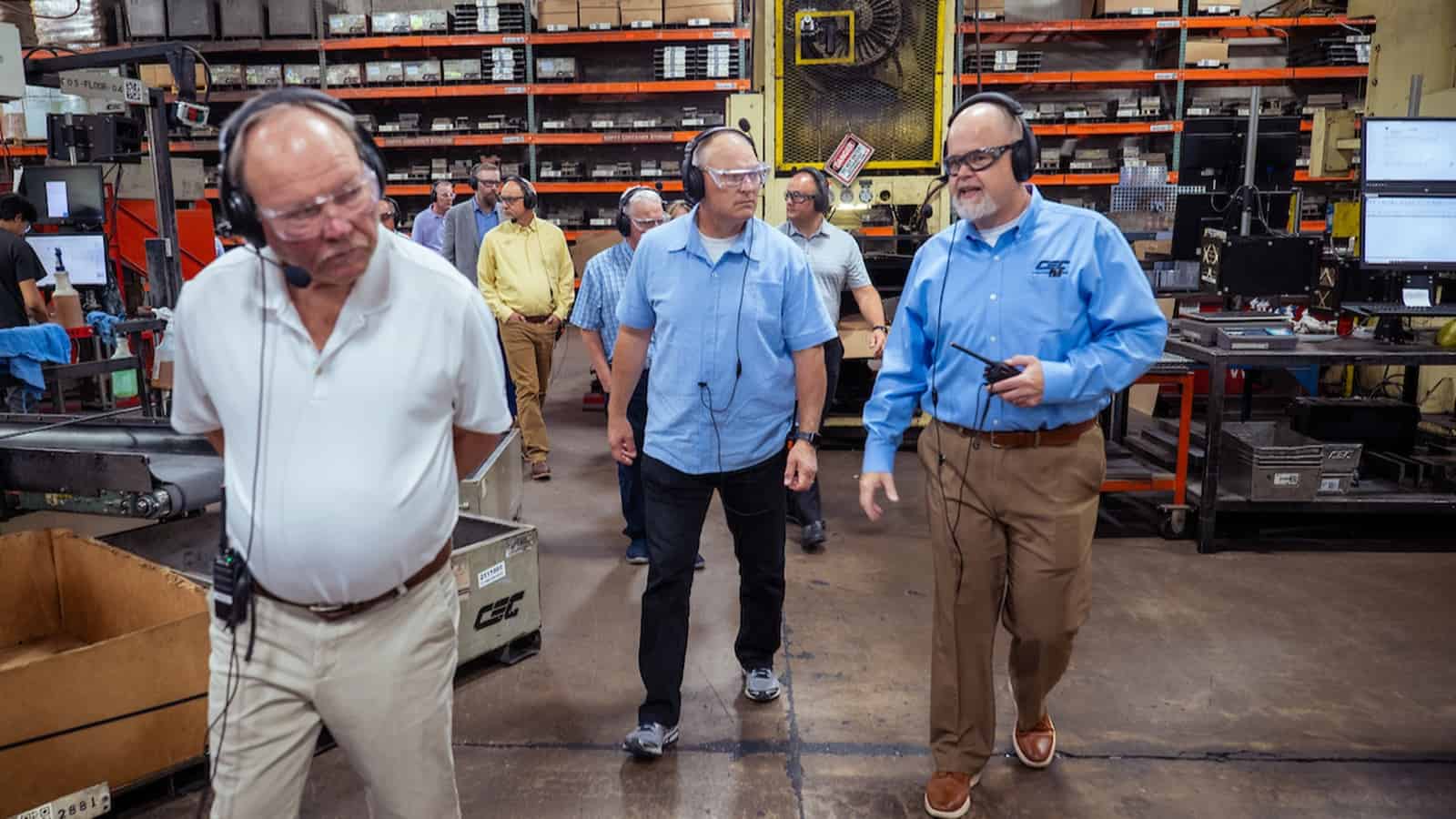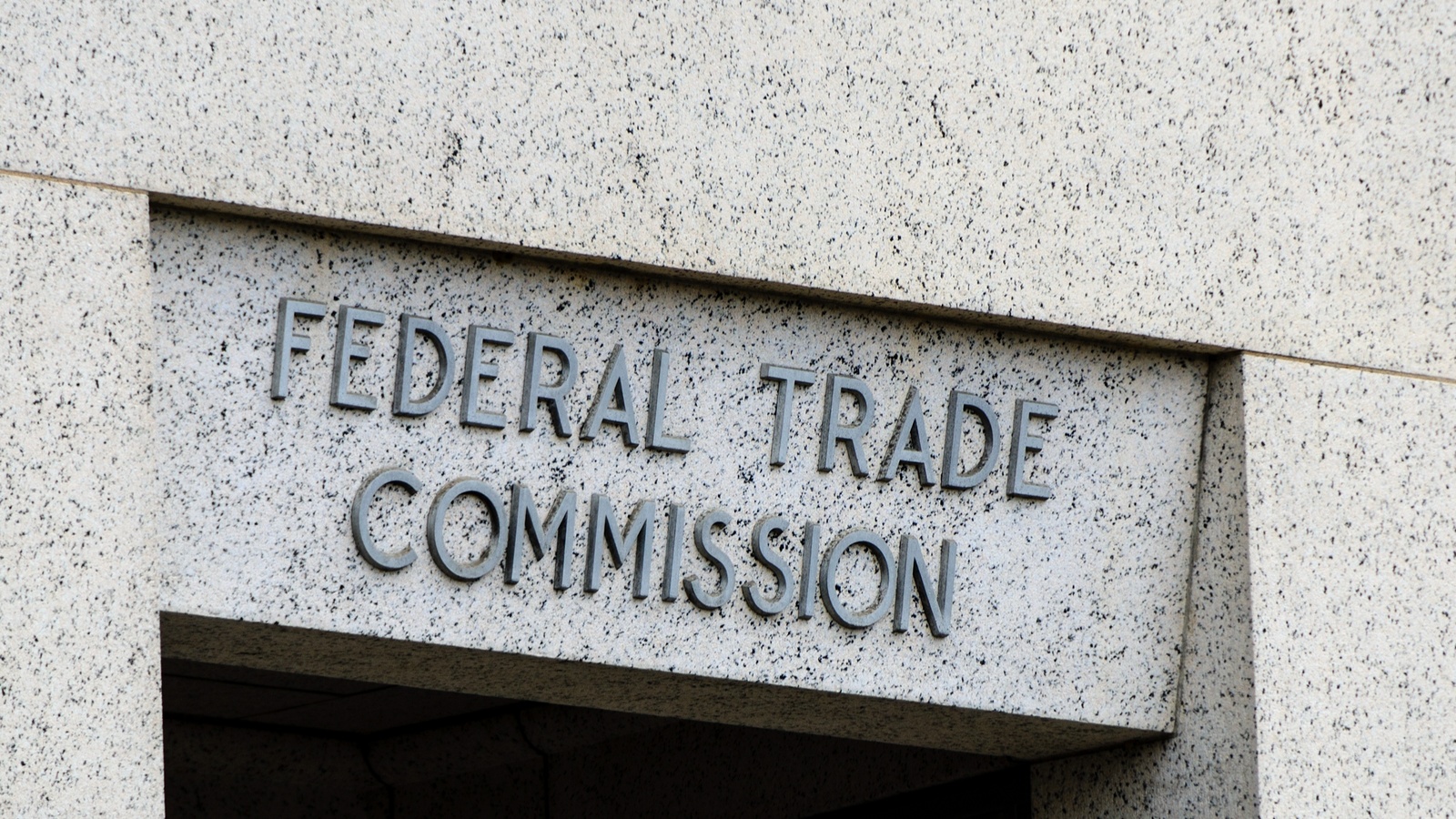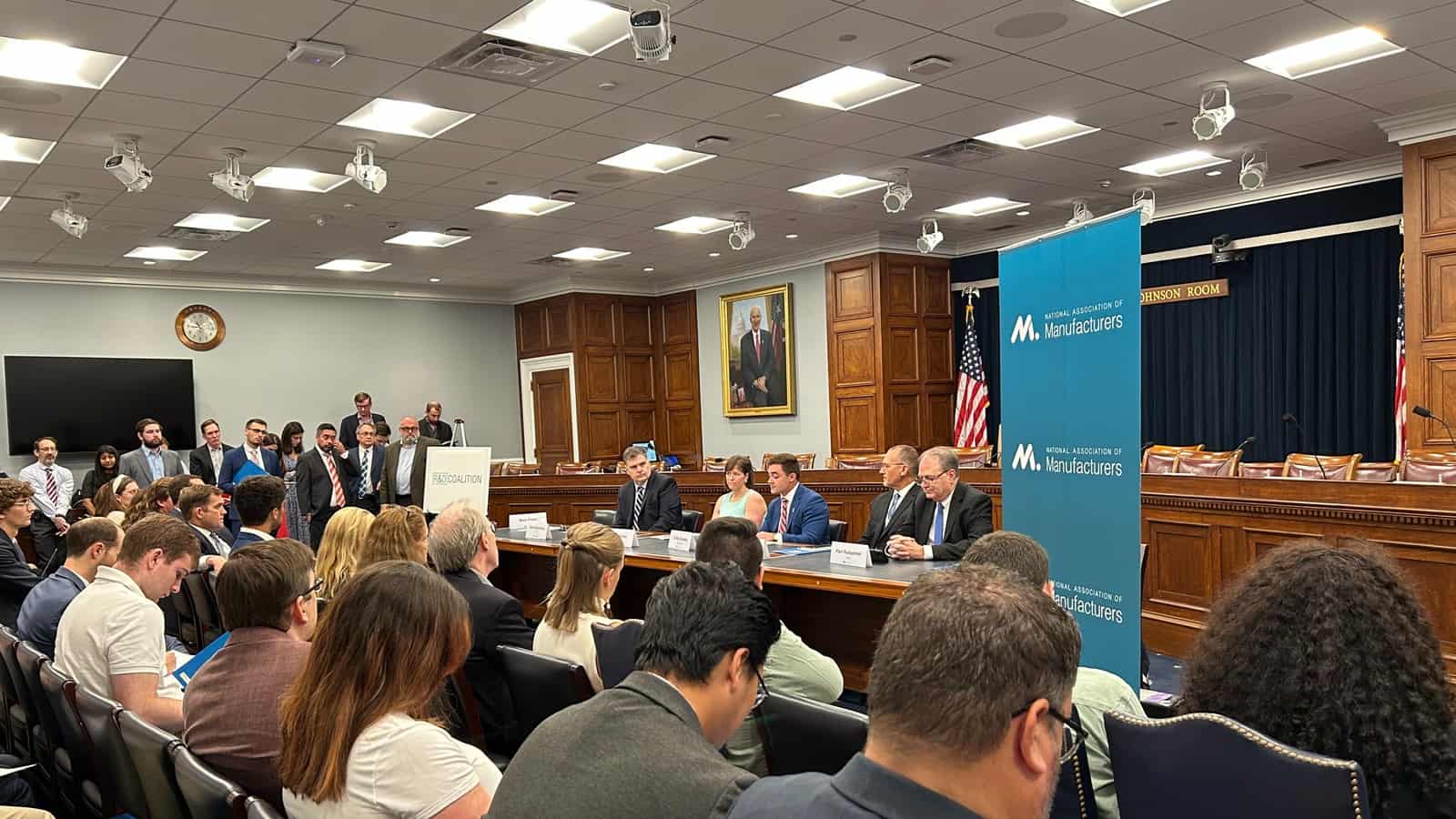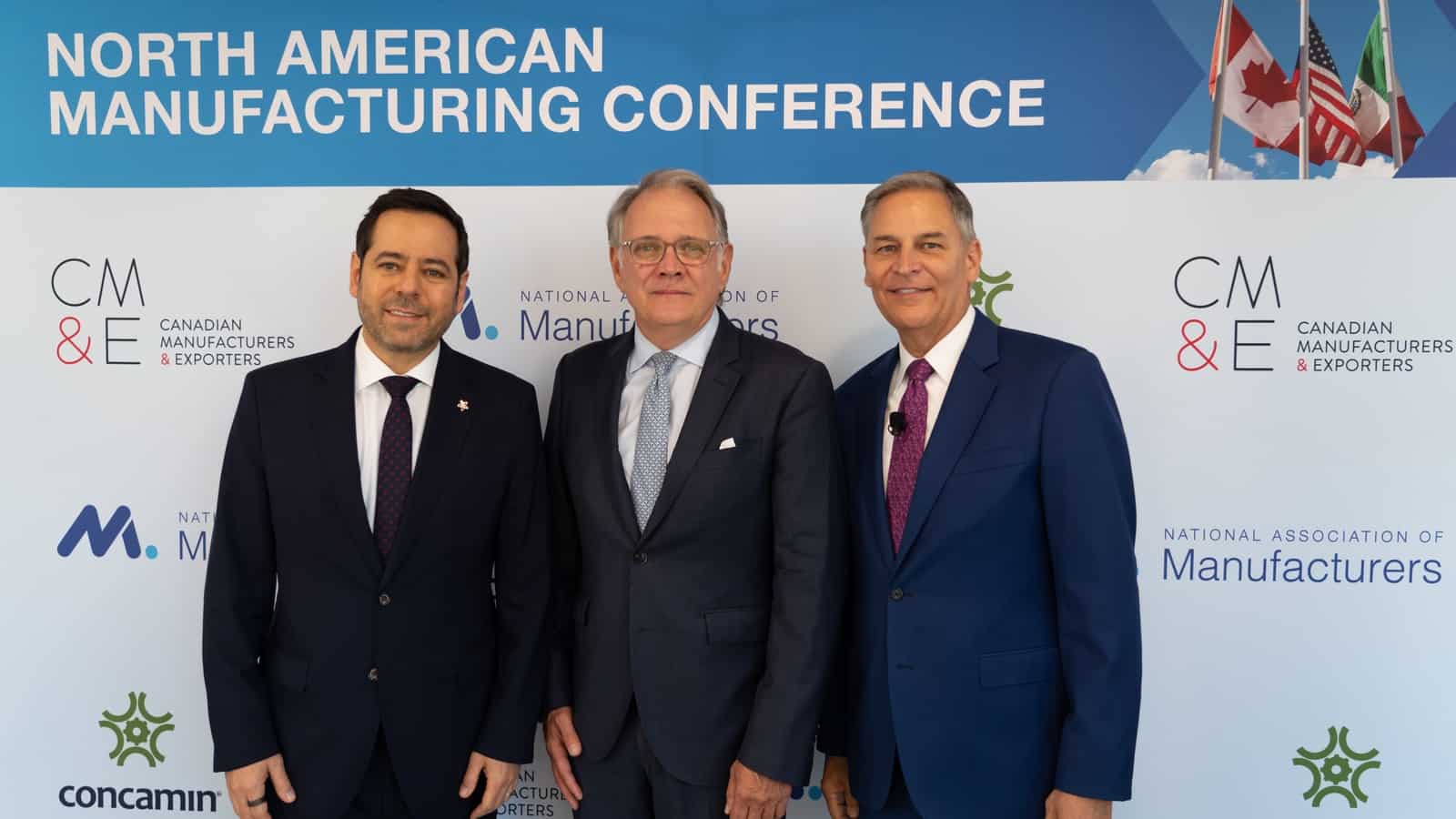Chemical Manufacturers Push EPA for Faster Action

Under the Toxic Substances Control Act, businesses must keep up with all of the requirements and restrictions relating to chemical substances. Although manufacturers fulfill their obligations with the utmost care, the Environmental Protection Agency isn’t keeping up its end of the bargain.
Alan Dyke, Ph.D. is the chief technology officer at Boulder Scientific Company—a specialty chemical company based in Mead, Colorado—and a member of the Society of Chemical Manufacturers & Affiliates. In his opinion, the EPA must change its approach if manufacturers in the U.S. are to remain competitive.
The company: Serving clients in many sectors, from pharmaceuticals to defense and aerospace, Boulder Scientific makes a number of complex and unique catalysts and compounds. The company proudly keeps all their manufacturing processes inside the United States.
- “We work with an end user to produce materials inside America with the right level of safety and quality, and to make those materials available for them within American borders,” Dyke explained. “We don’t outsource any manufacturing outside the U.S.”
The challenge: The EPA continues to miss congressionally mandated deadlines to review and approve compounds, creating havoc in an industry dependent on clockwork efficiency.
- “We’ve encountered delays because of the time it takes to file a document, the variability of response times from the EPA and the sheer number of documents we have to file,” said Dyke.
- At the same time, the EPA is imposing more regulations on chemical manufacturers that are difficult to navigate or confusing.
- “To make one of our compounds might take 10 different chemical intermediates from the first raw materials through to the end product,” he explained. “Each one of those materials requires a filing for each one of those compounds. And if any one of those steps is not approved, it interrupts our delivery process.”
The impact: These problems don’t just affect chemical manufacturers; they also cause problems throughout the supply chain and for customers and end users, who are forced to wait through a series of unpredictable delays.
- “During the past two years, we’ve seen a level of frustration building at the end-user level,” said Dyke. “Customers are considering sourcing from other countries where the system is more predictable and they won’t have to face these delays.”
The next step: Should the EPA fail to correct its course, even businesses dedicated to remaining in the U.S. may reach a breaking point, Dyke cautioned.
- “We are considering sourcing raw materials and advanced intermediates in other countries—and even establishing manufacturing in other countries—because registration and filing is easier in other places,” he said.
- “And that’s really concerning, because if we’re thinking about doing things outside the United States, then I can guarantee a number of SOCMA members are thinking similarly.”
The CHIPS effect: Even as the U.S. government encourages companies to manufacture semiconductor chips in the United States through the CHIPS Act, the EPA’s delays are making it harder to fulfill critical goals. Boulder Scientific, which does significant business with the chips industry, is caught up in this bottleneck.
- “The frustration from the folks who are buying those materials from us is that the incentive to support the CHIPS Act is strong, whereas the current EPA filing process is not efficient—and so there’s a mismatch,” said Dyke. “We’re not able to perform the way we would want to in support of that government incentive.”
The last word: “Manufacturers are facing an onslaught of environmental regulations like we have never seen before,” said NAM Vice President of Domestic Policy Brandon Farris. “The industry supports commonsense regulations that contribute to a healthy environment but don’t prevent manufacturers from creating the products that make modern life possible.”
The NAM, members of the NAM’s Council of Manufacturing Associations and Conference of State Manufacturers Associations recently launched Manufacturers for Sensible Regulations, a coalition addressing the impact of the current regulatory onslaught coming from federal agencies. To learn more, and get involved, go here.
NAM, Rep. Stauber Talk R&D, Workforce

Permanent restoration of R&D expensing is a top priority for manufacturers in Minnesota and the U.S. in general. That’s why Rep. Pete Stauber (R-MN) plans to sign onto the American Innovation and R&D Competitiveness Act as a cosponsor, he recently told the NAM.
What’s going on: Rep. Stauber discussed the importance of competitive R&D tax policy, along with the regulatory onslaught targeting manufacturers and the need for permitting reform, during a recent NAM-organized facility tour of Clow Stamping Co. in Merrifield, Minnesota.
- “Full expensing for R&D costs in the year in which they are incurred is essential for innovation and competition,” Rep. Stauber told the group, which included Pequot Tool & Manufacturing CEO Karlo Goerges in addition to NAM representatives and Clow Stamping leadership. “It’s imperative that it be reinstated as soon as possible.”
- The American Innovation and R&D Competitiveness Act would restore immediate R&D expensing permanently for small businesses.
- “Full R&D expensing was instrumental in our growth until the law changed last year,” said Clow Stamping owner Reg Clow. “It’s definitely having an impact on us. Our expenses have gone way up.”
Workforce woes: Clow is nearing the end of a $20 million facility expansion that will add 107,000 square feet of floor space and at least 60 jobs—but finding enough workers to fill those jobs won’t be easy.
- By implementing automation in its shipping and receiving departments, the company will be able to both increase its shipping output without additional workers and channel its current hiring efforts toward filling open positions with the production departments, Clow said.
- This is a short-term solution, however, and manufacturers like Clow Stamping need policymakers’ help to ensure the industry has enough skilled workers for the decades to come.
- During the facility visit, the group discussed the importance of educating younger generations about the many opportunities available in manufacturing, via initiatives like Creators Wanted. This award-winning perception campaign undertaken by the NAM and its 501(c)3 workforce development and education affiliate, the Manufacturing Institute, aims to recruit 600,000 new manufacturing workers by 2025.
The last word: “Manufacturers account for more than 55% of all private-sector R&D spending in the United States,” said NAM Managing Vice President of Policy Chris Netram.
- “Policies that encourage this innovation will allow the industry to continue to drive our economy forward. The NAM thanks Rep. Stauber for his support of the American Innovation and R&D Competitiveness Act and calls on Congress to swiftly pass this bill.”
NAM to FTC: Withdraw Proposed Merger Rules

The NAM is pushing back on proposed changes by the Federal Trade Commission and the Department of Justice that would expand filing requirements drastically for companies considering mergers, harming manufacturers of all sizes.
What’s going on: In June, the FTC—with the agreement of the Antitrust Division of the DOJ—announced an overhaul of the premerger notification rules under the Hart-Scott-Rodino Act.
- The HSR Act requires companies to provide notice to the FTC prior to consummating a merger, but the FTC’s proposed changes would lead to as much as a sevenfold increase in the time it takes to file the HSR form, according to the proposal.
- The proposed amendments would also necessitate complex and lengthy information reporting, as well as significantly enhanced document production—resulting in disclosure overload for companies pursuing mergers or acquisitions.
Why it matters: M&A activity is critical to the manufacturing industry. Larger businesses use M&A for efficiency and expansion, while smaller companies benefit from opportunities for capital formation and growth.
- The burdensome nature of the FTC’s proposal could disincentivize or delay promising, pro-consumer deals.
Manufacturers speak out: Last week, the NAM urged the FTC to withdraw the proposed changes to “protect businesses’ ability to grow and drive economic expansion in the United States.”
- The proposal would result in significant costs and delays for manufacturers, “stifl[ing] job-creating growth in the manufacturing industry without any corresponding benefit to the agencies, merging parties or the public,” NAM Vice President of Domestic Policy Charles Crain told the FTC.
- “If adopted, the proposal would dramatically increase the information that merging entities would be required to provide to the agencies before consummating a transaction … postponing the opportunities and job-creating investments that these transactions can create,” he added.
SCOTUS Affirms Manufacturers’ Call for Skilled Worker Support Program
Washington, D.C. – Following the U.S. Supreme Court’s denial of cert to reconsider the D.C. Circuit’s decision affirming the validity of Optional Practical Training extension for STEM graduates, a program that expands access to hundreds of thousands of skilled workers for manufacturers and other American businesses, National Association of Manufacturers Chief Legal Officer Linda Kelly released the following statement:
“Today’s decision ends a years-long legal battle, and the NAM Legal Center is proud to have fought to preserve the STEM OPT program, which will aid manufacturers in filling critical, skilled positions. Thanks to the NAM Legal Center’s efforts, the STEM OPT program will remain a vital talent pipeline, providing opportunities for those graduates in science, technology, engineering and math to enhance their education through hands-on work.
Background: In 2018, after an anti-immigration activist group brought a lawsuit against the Department of Homeland Security seeking to invalidate the entire STEM OPT program, the NAM and two other business groups moved to intervene as defendants in the case. The U.S. District Court for the District of Columbia ruled in the NAM’s favor in 2020, holding that DHS acted within its statutory authority and in accordance with the Administrative Procedure Act by continuing the STEM OPT program, a decision the D.C. Circuit affirmed in 2022. Today’s decision by the Supreme Court not to hear the case maintains the Circuit Court’s ruling and preserves the STEM OPT program.
-NAM-
The National Association of Manufacturers is the largest manufacturing association in the United States, representing small and large manufacturers in every industrial sector and in all 50 states. Manufacturing employs nearly 13 million men and women, contributes $2.91 trillion to the U.S. economy annually and accounts for 55% of private-sector research and development. The NAM is the powerful voice of the manufacturing community and the leading advocate for a policy agenda that helps manufacturers compete in the global economy and create jobs across the United States. For more information about the NAM or to follow us on Twitter and Facebook, please visit www.nam.org.
NAM to Congress: Advance R&D Tax Fix Now

To restore a U.S. tax landscape that promotes manufacturing competitiveness, Congress should act quickly in advancing bicameral, bipartisan legislation that would ensure the tax code once again supports innovation.
That was the message from the NAM and several manufacturers to lawmakers last week.
What’s going on: The NAM and company leadership from manufacturers Westminster Tool and Brewer Science visited Capitol Hill last week to brief legislators on a harmful change to the tax treatment of research and development.
- The briefing was held by the NAM-led R&D Coalition in cooperation with the offices of Reps. John Larson (D-CT) and Ron Estes (R-KS) and Sens. Maggie Hassan (D-NH) and Todd Young (R-IN).
- Larson and Estes introduced the American Innovation and R&D Competitiveness Act in the House, while Sens. Hassan and Young introduced the American Innovation and Jobs Act in the Senate. These are the measures manufacturers are urging legislators to pass.
Why it matters: “We paid $26,679 per full-time employee in additional federal tax this past year” because of the change, Westminster Tool Chief Financial Officer Colby Coombs told lawmakers at the briefing.
- “This increased federal tax on R&D forced us to cancel a major aviation contract that would have added … new jobs in our community and forgo a significant capital investment. Without fixing this issue, in 2023, we expect an additional tax bill of almost $18,000 per employee,” he continued.
- Added Brewer Science Government Programs Director Doyle Edwards: “We have lost IP to China in the past, and fight[ing] that in the courts is a no-win situation. So the only way to win is to out-invent them. And that’s what we invest our money to do. However, with [the tax change] … we’re allowing China to actually catch up.”
The background: For nearly seven decades, manufacturers could deduct their R&D expenses fully in the year in which the costs were incurred. However, since the change last year, businesses must instead deduct these expenses over a period of years, making R&D more costly.
Legislative fix: To protect manufacturers’ R&D, jobs and competitiveness, Congress should move immediately on bipartisan legislation to restore R&D expensing.
- “R&D is the lifeblood of advanced technology development for our company, for our industry, but really for the nation,” Edwards continued. “And so our message is, we need your help. We need your leadership to resolve this policy issue.”
Take action: Learn more about what the NAM is doing to advocate for sound tax policy at our R&D action center.
NAM Leads Inaugural North American Manufacturing Conference

On Sept. 19–20, the NAM convened the inaugural North American Manufacturing Conference in Washington, D.C., along with its counterpart associations from Mexico and Canada, the Confederation of Industrial Chambers of Mexico and Canadian Manufacturers & Exporters.
What’s going on: The conference provided an opportunity for North American manufacturing executives and government representatives to share perspectives on the opportunities and challenges facing the sector across the region. At the conference, industry leaders discussed the need to:
- Ensure that North America has the affordable and reliable energy needed to support the manufacturing industry;
- Support more regional competitiveness, greater growth and the success of the United States–Mexico–Canada Agreement; and
- Address regional workforce needs in the U.S., Mexico and Canada.
Deepening ties: On Wednesday, the NAM, CONCAMIN and CME signed a memorandum of understanding that will serve as a roadmap for future cooperation between the three organizations and support close economic ties between the U.S., Mexico and Canada.
- The memorandum calls for the organizations to share information about each one’s services and activities, and to work together to shape the continent’s future manufacturing agenda.
- In addition to leaders from the NAM, CONCAMIN and CME, speakers at the event included U.S. Trade Representative Katherine Tai, ExxonMobil Senior Vice President Neil Chapman, Toyota Motor North America Executive Vice President – Product Support and Chief Quality Officer Chris Nielsen, Rep. Adrian Smith (R-NE), Bombardier Head of U.S. Strategy Tonya Sudduth, Energy Transfer Co-CEO Tom Long and Caterpillar Inc. Chief Technology Officer and Senior Vice President of Integrated Components and Solutions Division Karl Weiss.
Common principles: “Shared values, shared prosperity” was a central theme of the conference, echoing President Biden’s remarks at the U.N. General Assembly earlier this week.
- “As president of the United States, I understand the duty my country has to lead in this critical moment; to work with countries in every region linking them in common cause; to join together with partners who share a common vision of the future of the world,” President Biden said in New York on Wednesday.
- “There’s never been a greater need for us to stand together,” NAM President and CEO Jay Timmons said. “The world is caught between different political and economic systems. Our system here in North America enriches lives and lifts people up into freedom and prosperity, while other systems oppress their people and rob them of their liberty,” he continued, adding that the USMCA, of which the NAM is a longtime advocate, serves as a reminder “of what we can achieve when we work together.”
Strengthening the region: Throughout the conference, discussions focused on three components of a successful North American economy—growth, resilience and competitiveness—and the critical role manufacturers play in that system.
- “Today, we live in a new reality,” CONCAMIN President José Antonio Abugaber Andonie said. “The commercial competition with China, the pandemic, the conflict in Ukraine … [all] place us before a second great industrial transformation in North America. … Some call it nearshoring, friend-shoring, ally-shoring or reshoring. No matter the name, the truth is that this phenomenon is modifying the structure of international industrial organization. North America is the epicenter of this transformation.”
- Added CME President and CEO Dennis A. Darby: “Manufacturers are an important driver of economic development and prosperity. We are key players in the changes and challenges of the 21st century.”
New Study: U.S. Health Care Supply Chain Resilience Demands Balanced Regulatory Environment
Washington, D.C. – The National Association of Manufacturers released a new study outlining steps to improve health care supply chain resilience to allow manufacturers in the United States to better prepare for and adapt to the next disruption. The study analyzes lessons learned from the COVID-19 pandemic, during which manufacturers across the United States produced critical health care supplies in a highly unpredictable environment that affected every industry level.
“During the COVID-19 pandemic, manufacturers in the United States helped lead our response and recovery and learned many lessons in the process,” said NAM Chief Economist Chad Moutray. “Policymakers should utilize these lessons to bolster our supply chain for the next disruption. This analysis, which was conducted by the Manufacturing Policy Initiative at Indiana University, reveals that there are key policy actions needed to strengthen the manufacturing supply chain. Research shows a more balanced regulatory agenda, with an emphasis on clarity, predictability and coordination, will help mitigate the effects of the next disruption.”
Key Themes
Seven key lessons from the pandemic can be examined for future efforts to build resilience:
- Speed matters: Manufacturers need to be able to serve demand quickly.
- Information matters: Manufacturers need timely access to accurate information.
- Costs matter: Firms face the costs of taking action within the supply chain, as well as the costs of managing market unpredictability and policy environment uncertainty.
- Networks matter: Partnerships can support information sharing and networks to help manufacturers navigate the disruption.
- Size matters: Small and medium-sized manufacturers and new firms can be differently—and uniquely—challenged compared with established larger manufacturers.
- Technology matters: Technology can enable manufacturers to enhance production, innovate or improve efficiency, as well as support broader efforts to build partnerships.
- Flexibility matters: Responses can come from unexpected sources and need a flexible policy environment.
Areas of Opportunity
The report identifies four key areas of opportunity to enhance health care supply chain resilience:
- Fostering a conducive regulatory environment: Manufacturers and their partners need clear and streamlined regulations as well as a flexible regulatory framework in advance of the next disruption.
- Supporting partnerships for stronger information sharing and networks: Sustained information channels between manufacturers and policymakers will improve access to information for all parties and mitigate disruptions.
- Ensuring a healthier “baseline” industry: Small business plays a pivotal role in the U.S. Robust entrepreneurship and scaling of new manufacturers contribute to a more competitive industry.
- Prioritizing changing workforce needs: Workforce development must be prioritized so that manufacturers can pivot across product lines and sectors to meet the needs of the next disruption.
-NAM-
The National Association of Manufacturers is the largest manufacturing association in the United States, representing small and large manufacturers in every industrial sector and in all 50 states. Manufacturing employs nearly 13 million men and women, contributes $2.91 trillion to the U.S. economy annually and accounts for 55% of private-sector research and development. The NAM is the powerful voice of the manufacturing community and the leading advocate for a policy agenda that helps manufacturers compete in the global economy and create jobs across the United States. For more information about the NAM or to follow us on Twitter and Facebook, please visit www.nam.org.
Overregulation and Workforce Challenges Weigh Heavily on Manufacturing Sector
Optimism Sinks to Pandemic Lows in Q3 Outlook Survey
Washington, D.C. – The National Association of Manufacturers released its Manufacturers’ Outlook Survey for the third quarter of 2023, which registered the lowest level of optimism among NAM members (65.1%) since Q2 2020, as the sector continues to confront a tight labor market, unbalanced federal regulations and critical policy debates in Congress.
“Manufacturers continue to be challenged in today’s economy, but what this survey makes clear is that unbalanced federal regulations are harming families and communities, with nearly two out of three manufacturers reporting that the regulatory burden is preventing them from hiring more workers or increasing pay and benefits,” said NAM President and CEO Jay Timmons. “Congress and the administration can help correct this trend by restoring sensible regulations, enacting further permitting reforms, taking action to keep our tax code competitive and other bipartisan steps to strengthen manufacturing in America and build on the progress we achieved with tax reform, the Bipartisan Infrastructure Law, the CHIPS and Science Act and more.”
Key Survey Findings:
- Only 65.1% of respondents felt positive in their company’s outlook, edging down from 67.0% in the second quarter. It was the fourth straight reading below the historical average (74.9%).
- Concern about an unfavorable business climate was the highest in six years (Q2 2017).
- The survey found that 69.1% of small manufacturers, and 63.2% of all respondents, would hire more workers or increase compensation if the regulatory burden decreased.
- More than 70% of manufacturers would purchase more capital equipment if the regulatory burden on manufacturers decreased, with 48.6% increasing compensation, 48.6% hiring more workers, 42.5% expanding their U.S. facilities and 38.4% investing in research.
- The top challenges facing manufacturers include attracting and retaining a quality workforce (72.1%), weaker domestic economy (60.7%), rising health care/insurance costs (60.1%), unfavorable business climate (56.7%), increased raw material costs (45.5%) and supply chain challenges (37.8%).
You can learn more at the NAM’s online regulatory action center here.
The NAM releases these results to the public each quarter. Further information on the survey is available here.
-NAM-
The National Association of Manufacturers is the largest manufacturing association in the United States, representing small and large manufacturers in every industrial sector and in all 50 states. Manufacturing employs nearly 13 million men and women, contributes $2.91 trillion to the U.S. economy annually and accounts for 55% of private-sector research and development. The NAM is the powerful voice of the manufacturing community and the leading advocate for a policy agenda that helps manufacturers compete in the global economy and create jobs across the United States. For more information about the NAM or to follow us on Twitter and Facebook, please visit www.nam.org.
NAM, KAM Bring Suit Against SEC

The NAM and the Kentucky Association of Manufacturers are hitting back against an attempt by the Securities and Exchange Commission to force privately held businesses to make public financial disclosures.
What’s going on: On Tuesday, the NAM and KAM filed suit in federal court challenging the SEC’s novel reinterpretation of its Rule 15c2-11.
- The reinterpretation—on which the SEC has not granted companies the opportunity to comment—would require private firms to release confidential financial information publicly.
The background: Rule 15c2-11 requires disclosures to protect investors in publicly traded companies issuing so-called “penny stocks.” But the SEC has broadened the rule’s application to include privately held companies that issue corporate bonds to large institutional investors under an entirely different regulation, called Rule 144A.
- Everyday investors can’t purchase corporate bonds issued under Rule 144A, so there is no reason to require public disclosures from these businesses.
Why it’s important: Expanding Rule 15c2-11 will mean higher borrowing costs and reduced liquidity in both the manufacturing industry and throughout the larger economy, according to a new EY report released by the NAM.
- The reinterpretation would lead to job losses of more than 100,000 every year, according to the analysis.
Manufacturers speak out: “The SEC never allowed public comment on its novel reinterpretation of Rule 15c2-11, there is no conceivable benefit to the new standard and the SEC did not consider the impact that its about-face will have on privately held businesses,” said NAM Chief Legal Officer Linda Kelly. “The NAM Legal Center is filing suit to hold the SEC accountable and protect manufacturing growth, job creation and U.S. competitiveness.”
- KAM President and CEO Frank Jemley added: “The SEC’s unlawful overreach threatens privately held manufacturers in Kentucky and across the country, so the Kentucky Association of Manufacturers is proud to join the NAM in this important litigation.”
Manufacturers Sue SEC to Protect Private Businesses, Release Data on Harmful Impact of Novel Rule Interpretation
Washington, D.C. – The National Association of Manufacturers and the Kentucky Association of Manufacturers filed a lawsuit in federal court today challenging the Securities and Exchange Commission’s attempt to impose unwarranted public disclosure requirements on privately held businesses.
The SEC has adopted a novel reinterpretation of SEC Rule 15c2-11, imposing the rule’s public disclosure requirements on private companies that raise capital via corporate bond issuances under SEC Rule 144A—without giving manufacturers the opportunity to provide comment on the damaging impacts of such a consequential change.
According to EY economic analysis released by the NAM today, the SEC’s expansion of Rule 15c2-11 will result in decreased liquidity and increased borrowing costs in the manufacturing industry and throughout the economy—leading to job losses exceeding 100,000 annually.
“The SEC’s attempt to force private companies to disclose confidential financial information publicly is a clear violation of the Administrative Procedure Act,” said NAM Chief Legal Officer Linda Kelly. “The SEC never allowed public comment on its novel reinterpretation of Rule 15c2-11, there is no conceivable benefit to the new standard, and the SEC did not consider the impact that its about-face will have on privately held businesses—which could exceed 100,000 lost jobs each year. The NAM Legal Center is filing suit to hold the SEC accountable and protect manufacturing growth, job creation and U.S. competitiveness.”
“The SEC’s unlawful overreach threatens privately held manufacturers in Kentucky and across the country, so the Kentucky Association of Manufacturers is proud to join the NAM in this important litigation on behalf of all manufacturers in the U.S. to counter the SEC’s regulatory onslaught,” said KAM President and CEO Frank Jemley.
EY analysis highlights the damaging economic impacts of the SEC’s actions:
The economic impacts of the SEC’s expansion of Rule 15c2-11 will be felt disproportionately in the manufacturing industry, which accounts for more than half of all nonfinancial issuers of corporate bonds under Rule 144A. Across the economy, the change will result in 30,000 jobs lost each year over the first five years the new interpretation is in effect. The job losses will increase over time—rising to 50,000 jobs lost each year after five years and 100,000 jobs lost each year after 10 years.

These job losses are attributable directly to the decreased liquidity and increased borrowing costs associated with the SEC’s new interpretation.
Background:
- SEC Rule 15c2-11 requires broker-dealers to ensure that key information about companies issuing over-the-counter equity securities is current and publicly available prior to quoting those issuers’ securities.
- SEC Rule 144A allows for resales of securities (primarily corporate debt issuances) to qualified institutional buyers—large financial institutions that own or manage more than $100 million in securities. Retail investors cannot purchase Rule 144A securities. Notably, under Rule 144A, issuers are obligated to make their financial and operational information available to QIBs.
- In September 2021, the SEC’s Division of Trading and Markets issued a no-action letter applying Rule 15c2-11 to Rule 144A debt. This decision contradicted the historical application of Rule 15c2-11 to OTC equity securities and bypassed important rulemaking safeguards required by the Administrative Procedure Act.
- The NAM and the KAM filed petitions for rulemaking with the SEC in November 2022 seeking both permanent and temporary relief from the application of Rule 15c2-11 to Rule 144A securities. Following the petitions, the SEC temporarily delayed enforcement of its novel reinterpretation until January 2025, but the agency has not acted to reverse this damaging decision permanently.
-NAM-
The National Association of Manufacturers is the largest manufacturing association in the United States, representing small and large manufacturers in every industrial sector and in all 50 states. Manufacturing employs nearly 13 million men and women, contributes $2.90 trillion to the U.S. economy annually and accounts for 55% of private-sector research and development. The NAM is the powerful voice of the manufacturing community and the leading advocate for a policy agenda that helps manufacturers compete in the global economy and create jobs across the United States. For more information about the NAM or to follow us on Twitter and Facebook, please visit www.nam.org.
